by Jasmine | Sep 27, 2018 | Yoga Therapy
We’re super pumped about this review because it’s pretty revolutionary. If you love or are even slightly curious about the rise of meditation apps like Headspace, Calm and Insight Timer, meet newcomer Core Wellness.
Core Wellness, kicks mindful-tech to the next level by delivering software, hardware, and real data to the mix. This sets Core apart from the pack for a full meditation trainer experience.
And you don’t have to take our word for it, use our code for 10% discount off your own Core Wellness. Use Code: ROOTYOGATHERAPY at checkout.
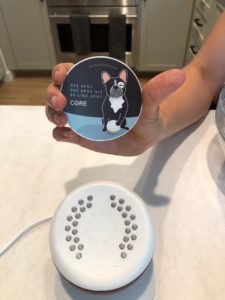
What is Core Wellness
A dynamic all-in-one meditation training system that combines guided meditations with a hand-held device to focus your breathing.
What you get
- A small palm-sized meditation device to hold and focus on while you meditate. This little device is so cute and compact, and fits neatly on any bedside table or tucked away on a kitchen counter. The device pulses (vibrates) while you meditate to sync your breath to the pulses. The stronger upward pulses is your signal to inhale, while the slower downward pulse is your signal to exhale.
- A great meditation app that provides guided meditations and data on your stress levels and heart-rate overtime.
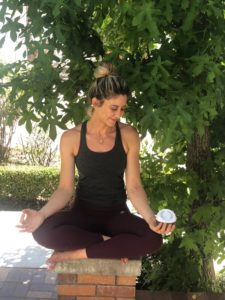
What I loved
- Guided Meditations are soothing and clear. They are simple, clear and fluid and partner nicely with the vibrations. And the meditations are great even without the device.
- Vibrations help you time and find a nice rhythm to your breathing. The pulsing keeps you focused on what you’re doing and prevents you from drifting away from your meditation by gently redirecting your attention back to Core.
- Vibrations are not intrusive, rather they’re soothing.
- Device is really comfortable to hold.
- Tracks your heart rate to determine your stress or relaxation states and provides the breakdown at the end of each meditation.
- Can choose guided or unguided mediations and can customize the pulsing for the unguided meditations.
What I could do without
- Needs to stay charged, so may be hard if you’re someone who likes to meditate on the go or like me, simply forgets.
How I used Core
I charged up core for a few hours and then downloaded the app. Setting up the application is very straightforward and easy to follow. That night I laid in my bed and worked through the basic meditations before dozing off to sleep with Core by my side. The basic meditations are really soothing and introduce you to the pulsing. Core uses the pulsing in different ways. The first meditation teaches you to sync your breath to the vibrations of core. I think this is a great way to slow down and learn basic controlled breathing. I used to count my inhales and exhales, but with core you don’t have to occupy the mind with counting. The second meditation I tried used interval pulsing to help you stay present throughout your meditation. Let’s be real, meditating is hard. We all are challenged with drifting into thought or dozing off. Core’s gentle vibrations act as little reminders to reconnect you back with your meditation. The third mediation I used, offered peaceful sounds of the ocean waves and the pulsing was used as more of background throughout the meditations. I found it interesting to see the variability in my heart rate while meditating and how much time I was actually in a state of rest throughout the meditation. One practice showed that I only had 3:12 minutes of calm throughout the 7 minute meditation! Yikes! My goal over time is to continue working with core and increase my “calm time” in meditation.

by Jasmine | Sep 17, 2018 | Yoga Therapy
This week’s post comes from guest blogger Ellie Porter from sleephelp.org, your one-stop shop for resources and support in getting better sleep. At ROOT, we’re huge fans of sleep (Read: Sleep Right, not Tight) and love all of these tips and ideas on how to ensure your sleep patterns help and not hinder your healing journey.
Our bodies and minds need balance to travel along the path of self-healing. Whether we’re overcoming a big break-up, grieving the loss of a loved one or coming to terms with our need to change, we cannot fully heal without finding harmony in our lives.
At the core of that balance is our good friend sleep, which serves as the foundation for overall physical, emotional, and mental wellness. Without sleep, the body changes in ways that get in the way of how we feel about ourselves, our circumstances, and our healing.
While we all know that we need sleep to function, here are a few surprising reasons why you need it even more as you heal.
1. Without enough sleep, the pessimism starts flowing.
Whenever I’m tired, handling even the smallest aggravations becomes difficult. I’m not the only one who gets irritable when tired, as seen by the long line of grumpy people at Starbucks.
This is because when we don’t get enough sleep, the emotional center of our brains, called the amygdala, becomes hypersensitive to negative thoughts and events. The increased activity in this area of the brain expresses itself as increased irritability, aggression, anxiety, and/or sadness.
While the amygdala is busy being oversensitive, the prefrontal cortex gets quieter. This part of the brain controls our executive functions like attention, focus, reasoning, and decision-making. Sleep allows the prefrontal cortex to apply reason as we process emotions.
This imbalance caused by sleep loss increases our stress and anxiety levels, throwing us off our healing path. It’s harder to keep our positive vibes and more likely that we’ll revert back some of our limiting beliefs and coping mechanisms.
2. Sleepy people feel less in control of our healing.
This emotional imbalance trickles down to impact one of the most important parts of our emotional and mental healing journeys: Acknowledging that healing is within our full sphere of control. When we don’t get enough sleep, we have a difficult time seeing our problems in perspective AND recognizing that we can do something about them.
Additionally, some of the issues or circumstances that are out of your control – bad coworkers, noisy neighbors – suddenly feel like insurmountable obstacles rather than a stumbling block. At the same time the things within our control – our newfound patience, love, and acceptance – become that much harder to practice.
All are necessary for self-healing and all are nearly impossible because of sleep-deprived emotional imbalance.

3. Sleep loss increases our appetite for unhealthy food.
These emotional fluctuations can be magnified by the physical changes that take place if we’re struggling with sleeplessness. Take a healthy, well-balanced diet, for example. Sleep plays a regulatory role in appetite and metabolism. Lack of sleep causes the body to release more of the hunger hormone ghrelin and less of the satiety hormone leptin. It’s hard to feel full when our hormones are working against us.
I find myself reaching for comfort foods like chips, cookies, and brownies when I’m tired. These foods simply feel better when I haven’t gotten enough sleep but make it harder for me to stick to eating the foods I need to properly nourish myself and heal.
A 2016 study found that participants who slept 4.5 hours chose snack foods with 50 percent more sugar and twice the fat than when they’d slept 8.5 hours. These same participants reported that resisting these foods was much harder with less sleep. It was found that sleep deprivation stimulated the same rewards centers of the brain.
In fact, the reward center of the brain gets a “runner’s high” from high-fat, sugary foods when we don’t get adequate sleep. Unfortunately, self-healing is hard to do if the body doesn’t have the fuel it needs for optimum health.
Ways to improve the amount of time we sleep and our sleep efficiency.
Sleep efficiency is the number of hours we actually sleep versus the time we spend in bed. Your personal habits and behaviors have a powerful impact on your sleep. Sometimes all it takes is a few small shifts to improve your sleep outcomes like:
-
Get Comfortable: Find a supportive mattress that’s firm enough for your weight and preferred sleep style will help you sleep the best. You’ll also want to make sure your bedroom is cool, somewhere between 60 to 68 degrees, with as little light as possible.
-
A Consistent Bedtime: The human body loves consistency. Waking up and going to bed at the same time every day helps your body follow the regular 24-hour cycles, called circadian rhythms, that control your sleep patterns. The more you follow these cycles the stronger and more consistent they become.
-
Relaxing Bedtime Routine: A relaxing bedtime routine may be one of the best ways to strengthen your self-healing journey. Both yoga and meditation have been shown to help the mind and body relax for better sleep. Consistent meditation can strengthen the connection between the prefrontal cortex and amygdala and reduce the size of the amygdala so that negative thoughts and emotions have less power over your actions. More traditional bedtime routines may include reading a book, listening to quiet music, or taking a warm bath. Basically, any activity that helps you feel calm and relaxed.
-
Healthy, Evenly-Spaced Meals: Healthy, well-balanced meals spaced evenly throughout the day help the brain to recognize when to start the release of sleep hormones. Regular meals also prevent indigestion and discomfort from interfering with the onset of sleep.
-
More Time Outside: Natural light is absorbed by special photoreceptors in the eyes and travels directly to the circadian region of the brain. Thus, light plays an integral role in the timing of your sleep cycle. The more time you can spend outside in the sunlight, the better your brain is able to correctly adjust the release of sleep hormones. Take a walk outside, sit on your front porch, or use your lunch break to get some fresh air.
Adequate sleep is a part of creating the balance we need to be the person were intended to be. With sleep is a priority, we are better able process and learn along our self-healing journey.
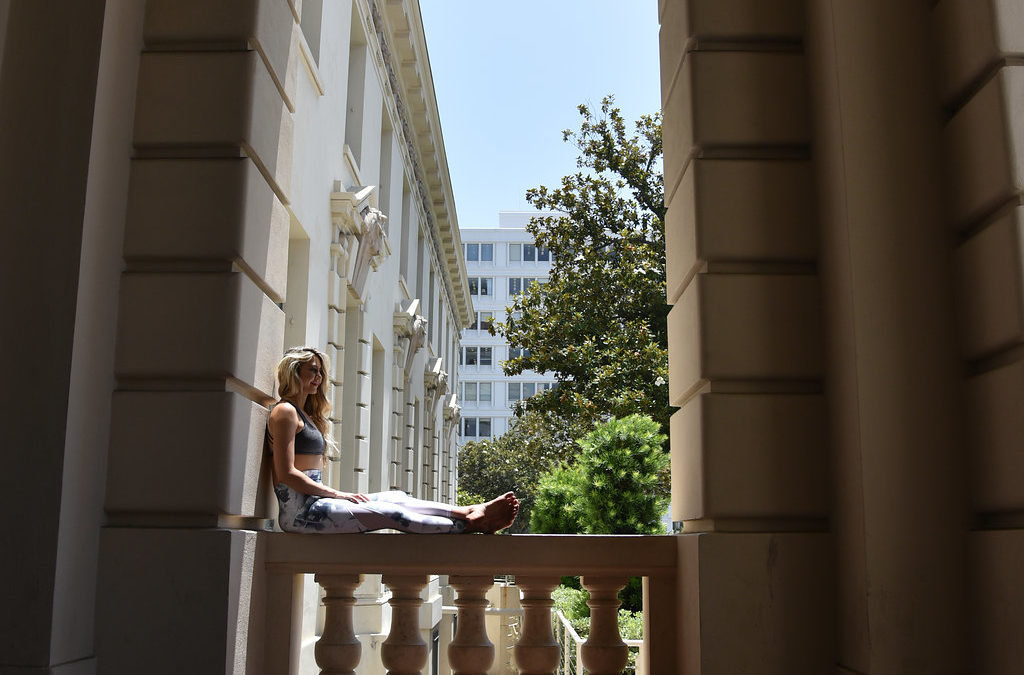
by Jasmine | Aug 6, 2018 | Yoga Therapy
Our ability to trust ourselves, self-trust, is crucial to how we move through the world. It requires that we know what we want and have the confidence that, regardless of outcomes, we’ll be okay with whatever decision we make.
It’s one thing when someone says, “I don’t trust myself” about Krispy Kreme Donuts or a bag of oatmeal cookies – guilty – but it’s much more disruptive when we don’t trust the decisions we make in life.
Self-trust comes up a lot, especially during transitions. Venturing into the unknown can bring up a lot of fear and cause us to re-evaluate whether or not we REALLY trust our decisions. Some common ones are:
- Moving -homes or cities
- Switching jobs
- Getting married
- Starting a family
- Making an investment like buying a house or continuing your education
- Ending a toxic relationship
It’s at these times that our self-trust is most tested. When it’s not there, we end up questioning everything.
When I was 15 years old, I visited a tarot card reader. This was 1/3 fun and 2/3 a desperate need to know the answers. I didn’t trust myself so I was searching for someone to tell me whether I was I on the right track.
After a few minutes, the tarot card reader told me that I would NEVER get married. I had always dreamed of getting married and having a family so, when I heard that this wasn’t in the cards for me (pun intended), I was crushed. I trusted that message more than I trusted my own power to create my own life.

I carried that message for so long that, when I actually got engaged and marriage became a possibility, I couldn’t help think that the tarot card reader might still be right. Silly I know, but I remember having that thought and then feeling sad when I realized how powerless I had allowed myself to be for all those years.
The tarot card reader was just one example out of years struggling with self-trust. I was so disconnected with myself – what I was feeling and why – that there was no way I could trust my intuition or decisions. As a result, I was easily pressured by the expectations placed on me by my family and others in an attempt to fit in.
For many years, I made decisions to please others, even if they weren’t aligned with who I was. This made things messy, to say the least, as I gave enormous power to fear. It wasn’t until I uncovered my power and trust in myself, that I felt free from these expectations.
 Building trust in yourself is key to reclaiming control of your health and happiness. It allows you to take ownership of your life and turn your dreams into inspired action.
Building trust in yourself is key to reclaiming control of your health and happiness. It allows you to take ownership of your life and turn your dreams into inspired action.
Whether you’re approaching a big life milestone, transition or simply wanted to make a small shift in your everyday patterns, trusting in yourself frees you from paralyzing fear, stigma, and unwanted expectations. It allows you to ride life’s waves while staying aligned with who YOU are.
Here’s a meditation practice that you can use to make a small shift towards a trusting yourself more!
Meditation for trust
Flex your trust muscles as you set your intentions.
- So often when setting an intention, we think of one thing, then another, then another then realize we don’t know which thing we need and just end up saying forget it. When setting an intention, notice the first thing that comes to mind. Set that thing as your intention and trust that this is your intuition speaking to you.
Cultivate an inner resource.
- An inner resource is something (a person, place, object) you can call upon that brings you feelings of support and strength. When we are cultivating self- trust, holding the energy of an inner resource can offer a sense of resilience and put something or someone in your cheerleading corner.
Breathe into the resistance.
- Trusting can be scary, especially when our trust muscles are just getting warmed up and starting to build strength. Often with fear, there is resistance. While you’re meditating, notice the resistance and notice where in your body you’re feeling it. Is it your neck, back or maybe even stomach (gut region)?
- Name those parts and visualize the breath easing the tension.
Notice where you are placing your trust.
- Our reality develops around where we place our trust. As you mediate be mindful of your thoughts and what you believe. If you find yourself spiraling down the rabbit hole of anxiety, worry and fear about making a wrong decision or not knowing the next step, remind yourself that this is you not placing trust in yourself but rather in this illusionary experience. Stop yourself and redirect your attention.

Practice gratitude.
- Put a little “me” spin on this. Remind yourself of your accomplishments and the things you like about your personality. This will strengthen your connection to yourself and give you perspective of how far you’ve come.
You can do it. Trust yourself!
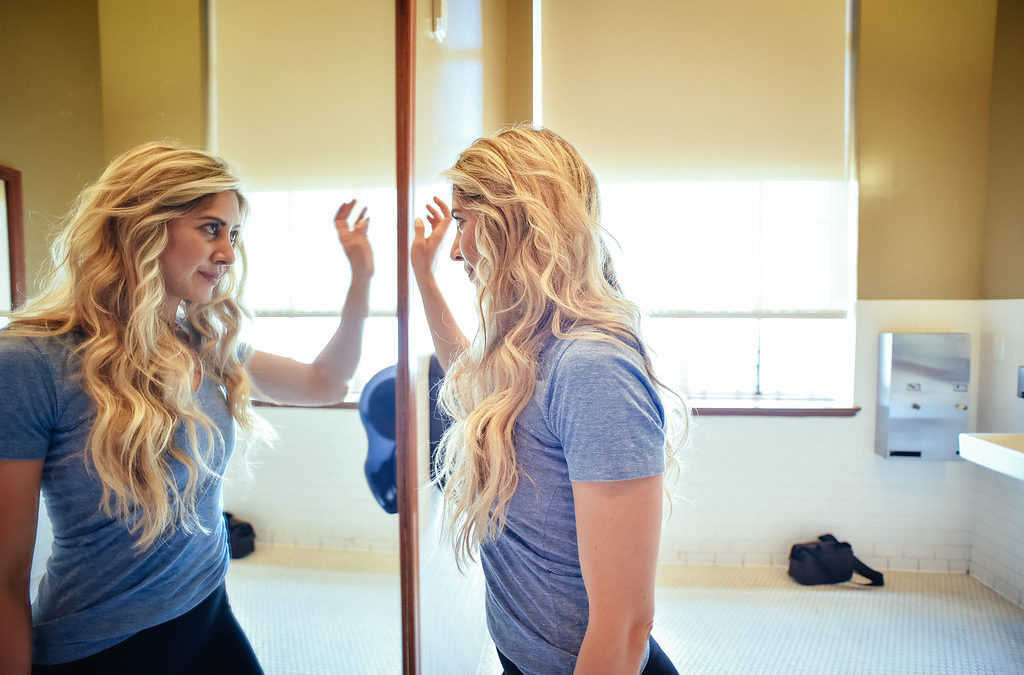
by Jasmine | Jul 24, 2018 | Yoga Therapy
“Your wounds are craving your healing. Lean into yourself and be the deep listener you’ve always needed.” – Vienna Pharaon
In yoga, we say that the physical symptoms like chronic pain or illness, are the last signs to show up. In Ayurveda (the sister science of yoga), things like digestion and sleep patterns are looked at as tools to help spot imbalances and offer a direction for healing.
Healing is the process of becoming healthy or whole again, meaning we have to consider ourselves as more than just a physical body having physical symptoms in order to address that wholeness.
Our physical symptoms have an effect on our mental and emotional health just as much as our mental and emotional health impacts our physical symptoms. How do I know this? The same way you know this? Good ol’ fashion experience… and science of course.
Have you ever felt like you had a physical symptom (back pain or digestive issues) and nothing or no one could help? When my back pain was at it’s worst as a teenager, my mom took me to several specialists who, after dozens of tests and a CAT scan, said my back was in perfect working order.

You would think I would have been relieved to know that nothing was “wrong”, but I wasn’t. I was angry, upset, and overwhelmed with a feeling of hopelessness. If these specialists couldn’t help me and nothing was “wrong”, would I ever get better? The doubt, isolation, and sadness I was feeling because of my physical pain, only made my pain worse as I became stuck in the pain cycle.
Let’s now explore this from the other end. All of us have faced emotional and mental challenges and trauma. Yet it’s rare that we link those experiences to our physical health. But the truth is, everything we experience gets stored in our bodies and tissues.
When something is not acknowledged or welcomed (good, bad, light or heavy), it’s stored. Typically, it’s the painful feelings and experiences that we resist welcoming and are afraid to confront.
When my dad passed away, I had no idea what to do with that grief. I also didn’t want to believe my Dad was gone. For a while, I pretended that he lived in a faraway land and we just didn’t get around to speaking much. I was afraid to acknowledge his death for fear that I would start crying and never stop.
That grief had compounded in my body and was showing up in my posture, my breath, relationships and physical aches. Again, without my awareness, I was stuck in the pain cycle.

When we’re wounded in any way, we’re in a constant state of “flight vs. fight” (meaning we are in a chronic state of “survival mode”). And take it from me, when we are used to living in the pain-stress cycle and paralyzed by fear, it can be nearly impossible to connect that our current habits are signs that we are in need of healing.
But remember, the physical symptoms show up last. Here are some daily protection patterns to look for in yourself (or loved ones) that may reveal a need to heal.
You react first, think later: When we’re emotionally or mentally wounded, we’re internally in survival mode. As a result, our brains tell our bodies that we are in serious and imminent danger so we react based on instinct and fear and not rationale. This dates back to caveman times when we couldn’t risk waiting and contemplating whether the beast outside our cave was a friend or a foe.
Today, post-caveman, we still react as though we are in a constant state of threat due to chronic stress. Whether we are stuck in traffic (and afraid of being late) or get a promotion (happy yet terrified of the amount of responsibility) we have an immediate response that is usually grounded in fear.
When we find ourselves stuck in a pattern of instant reaction, this means that we aren’t being mindful or giving ourselves the space to process what is really showing up. And when we fail to acknowledge our feelings before we act on them, it generally leads to fatigue, anger, resentment and a sense of disconnection from ourselves and others.
If you find yourself quickly reacting to situations and then later regret those actions, then you’re likely struggling with unresolved issues that need a closer look.
You’re easily distracted: Distraction is normal and happens to everyone. I’m not talking about the normal distractions like when your phone rings in a meeting or a loud siren interrupts your conversation. I’m referring to a prolonged pattern of self-distraction which results in loss of productivity and movement towards a goal.
The constant need to distract ourselves often indicates you’re struggling internally. Distraction is a powerful tool that energizes resistance and avoidance. Again, you’re in survival mode, meaning you do not feel safe enough to let go and trust. As long as you stay on the “look-out” and keep your attention everywhere else, there is no time to be vulnerable.
Your plans or projects have stalled: This is an off-shoot of the distraction symptom, but often when we’re grappling with emotional and mental wounds everything else hits a wall. Did you get passed over for that promotion or fail to meet a goal? Were you planning a trip with the girls, writing that book or starting that blog but none of them got off the ground?
Whether we notice it or not, emotional pain is exhausting and takes a lot of effort to endure. We’re often not able to focus enough to follow through on our plans or we’re too busy being “on guard” to even make any. Within each missed goal is our ego protecting itself from the fear and threat of taking a leap into the unknown.
You spend lots of time daydreaming about a drastic move: I’ll be the first to admit that I’m a daydreamer. I love to think I’m on an island somewhere without a phone or computer, and that an endless line of green juices miraculously appears for my enjoyment.
 There is a big difference between the occasional fantasy and the daily desire to quit your job, leave your marriage or pick up and move to Alaska (shout-out to Alaska).
There is a big difference between the occasional fantasy and the daily desire to quit your job, leave your marriage or pick up and move to Alaska (shout-out to Alaska).
All of those things might be the right decision in the long run, but it’s the ongoing thoughts of being somewhere 100% different than where you are right now that reveals how unsafe you feel in your mental and emotional world and how the life your living is not serving your highest calling.
You find it hard to truly be happy for other people: No one wants to admit this, but we’re all guilty of hearing someone else’s good news and wanting to roll our eyes or make up a reason as to why they got the opportunity instead of you.
It’s not because we’re bad people, but it comes from our fear of scarcity (there are not enough opportunities to go around) and our feelings of unworthiness (we don’t deserve happiness).
Remember, we’re in survival mode so, this is our ego’s way of protecting us from potential disappointment. When our ego is calling the shots, that means we are feeling threatened by something within us.
You’re in physical pain: My physical pain was my big wake-up call to my unfelt emotional pain about losing my Dad. For many, this is sometimes the fastest way to know something needs healing. When we hold onto too much stress or emotional pain, we can notice one of two things (or perhaps both!):
- We are carrying our pain somewhere in our body or experiencing chronic symptoms like headaches, disturbed sleep, digestive issues, etc. (me and my horrible back pain)
- We are getting sick more frequently.
Mental and emotional stress changes our cell structure because when we are experiencing this, we perceive the world around us as a threat. Our perception of our reality will send corresponding signals to our bodies and our bodies will respond based on those signals.
When we are in a constant state of threat, stress and fear our body is not concerned with protecting our internal environment and fighting off bacteria or balancing our hormones because it’s focused on keeping us safe externally. So the priority is shifted to getting us to a safe place, not keeping us healthy. After all, how important is our health if we get eaten by that bear?
If you have a habit of one or more of the above signs, it’s time to get curious about what’s going on beneath the surface. Awareness is the first step to understanding, so take some time to meditate, journal, or explore your patterns on your own, with a therapist or yoga therapist. Once you get clear about your emotional and mental state, you can begin to shift your protection patterns and move to a freer and lighter space.
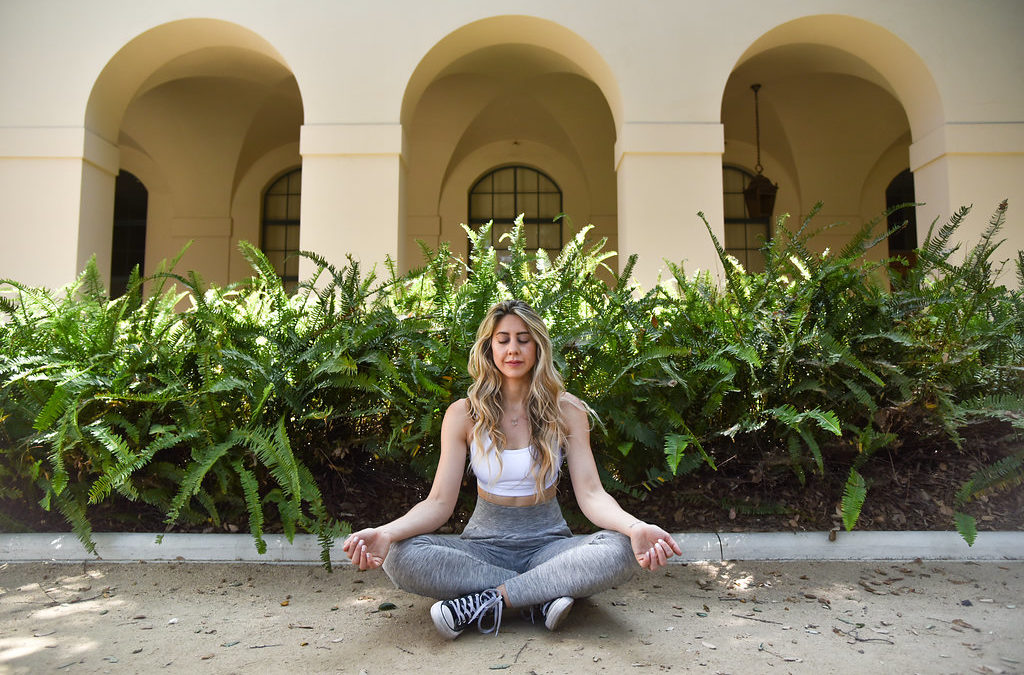
by Jasmine | Jul 5, 2018 | Yoga Therapy
Lately, I have been working on shifting my relationship with attachment. Coincidentally (or not!), my clients and close mentees have also brought this up as something they want to focus on. So, we have gathered to ride this wave together. In this blog, I share about my relationship with some of my current fears and worries. If you’re experiencing something similar, please know that you’re not alone. I also provide a meditation to help you find a little bit of warmth and space on a dark day.
I’m having the hardest time chilling out. It’s probably because if you watch the news, have a smartphone or access to the internet, you can’t deny the amount of chaos happening in the world. Times are stressful and worrisome including:
- Climate change
- Family separation at the U.S./Mexico Border
- High profile suicides
- Supreme Court changes that are sure to impact women’s health laws
- Mass refugee crisis
Pain seems to be all around us. Aside from climate change – which has been progressively worsening – it’s hard to know if there is more distress than before OR if it just feels closer thanks to our 24/7 news cycle. Either way, the increased attention on these unsettling circumstances is strengthening our relationships to fear and worry. This also explains why the number of people I see for generalized stress and anxiety has ramped up.
And on top of all this, most of us also have our own load of distress in our personal lives. Whether we’re struggling with our own mental health, addiction, crisis, or that of a friend or relative, it’s hard to deny the pain and need for healing.
This month, someone close to me has been battling substance abuse. If you’ve been in this situation, you know how heavy it is. If you’re going through this as well, you can probably relate to my feelings of:
- Fear
- Doubt
- Sadness
- Shame
- Low-grade guilt for holding true to my boundaries – walking that fine line between support and enablement
I’m also brought back to the same feelings of heaviness that I experienced growing up (a story I’ll save for another blog). So not only are these feelings very hard to sit with, but they also open old wounds, some that may never fully heal.
 When surrounded by chaos, uncertainty or a loss of control, we feel disempowered and helpless. And if these feelings have come up before in your past, it can be harder to dis-identify from these feelings and see them as separate from yourself. Instead, we find ourselves slipping down the rabbit hole of depression and fear as part of a habit of response.
When surrounded by chaos, uncertainty or a loss of control, we feel disempowered and helpless. And if these feelings have come up before in your past, it can be harder to dis-identify from these feelings and see them as separate from yourself. Instead, we find ourselves slipping down the rabbit hole of depression and fear as part of a habit of response.
The point of this blog isn’t to “cheer you up” or say “look on the bright side.” That’s not realistic and I also find it minimizes our healing and need to feel and observe everything – the joy and the fear. The goal is to help you, and me, find small moments to detach from anger and grief and connect with joy.
This goes back to our rule of “little and often” – finding small moments to make gentle shifts to get us through the tough times, the triggers, and the stress.
The truth is, is that there is always some, if not lots, of joy around us all the time. The common struggle is; how do you carve a little space of loving, calming, joyful power in this midst of chaos?
Meditation and breath are not only powerful tools for relaxation, but they are also powerful in helping us re-create memories and embrace experiences. Getting back to these memories helps reduce our stress and builds up our emotional resilience, especially when we’re anxious about the future of our family, friends or world.
Here is the meditation that uses a lot of breath work and visualization. This has been my go-to practice to help manage my stress and reduce my anxiety and lately I have been sharing this with those around me. This meditation has 3 parts: 1) Set up, 2) Breath, and 3) Visualization.
Meditation to hold joy and fear at the same time
Set up
- Commit to creating space for yourself. We need to find time to disassociate from the world around us and the overwhelming sensations and feelings that are showing up. As we create this space, we find silence and meditate.
- Set a timer for 7 minutes.
- Find a comfortable seated position. Close your eyes. Begin your normal breathing pattern.
- What are you feeling? Notice your feelings. Acknowledge and label what is there. Do you feel angry, scared, sad? If you do, label it and identify where in your body you feel it (chest, hips, jaw, head, etc.). Get very clear on your emotions so you can begin to create a little distance from them.
Focus on your breath
- Tap into your breath – Breath deeply and slowly, in your nose and out of your nose.
- Visualize your breath – Picture your breath as a color. What color is it? Is it one color or multiple colors? Notice how it might change color as your mood changes. What color(s) do you gravitate towards?
- See the breath as that color and watch as it moves in through both nostrils and out through both nostrils.
- Now see that same color come in and out of one nostril at a time – first in through the left, then out through the right; then in through the right, and out through the left.

Time for visualization
Choose a memory: Think of a place or time that reminds you of joy. Maybe it’s a loved one, a great vacation or an object. Bring to mind a time that you experienced pure joy. Get very detailed about your memory. What are you seeing, smelling, feeling, hearing and tasting? Are you alone or with someone? The details are critical and will help you make the mind-body connection. For me, I go back to my honeymoon in Italy. I can hear the ocean waves outside our room, feel the warmth of the sun on my skin, and smell the salt in the air. It was my last real vacation and one where I felt full of love and life.
Connect with the qualities of joy: With that thing in mind, tap into the quality of joy that you’ve felt. What are the sensations? Is it warmth and lightness? Do you feel big or small? Where in your body do you feel it? With these memories and feelings, remember that you are part of something bigger than even the events of today and those in your life.
My honeymoon in Italy was full of comfort and peace. I felt so light when I was there. We couldn’t use our phones so we rarely even knew what was going on in the world. In that space, we connected with each other and the culture around us. We tasted new foods and immersed ourselves in a place and with people outside of our routine.
Hold both the anger and the joy at the same tie: With all of the details of this joyful memory in mind, start to bring in your feelings from earlier. Hold onto the joy, warmth, and lightness as you work towards the anger, fear or shame. What does it feel like to acknowledge both senses?
Breathe in the anger, and out the joy. Then breath in the joy and out the anger. To recognize that you are holding both allows you to understand that you have both. In that, we are not limited to one and are not attaching to one.
In life, there is always more than one thing happening at a time. Our lives are never 100% joyful or 100% fearful. We are always balancing both feelings and thoughts. It is our choice as to what we hold onto the closest.
When we get sucked into the tornado of fear, we forget about the part of us that is always at peace. This part is simply the watcher and observer of life. If we can connect with that side of ourselves, it will remind us that we hold power and significance and we are part of something great.


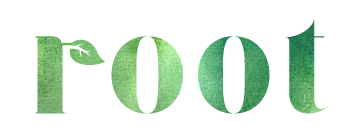





 Building trust in yourself is key to reclaiming control of your health and happiness. It allows you to take ownership of your life and turn your dreams into inspired action.
Building trust in yourself is key to reclaiming control of your health and happiness. It allows you to take ownership of your life and turn your dreams into inspired action.



 There is a big difference between the occasional fantasy and the daily desire to quit your job, leave your marriage or pick up and move to Alaska (shout-out to Alaska).
There is a big difference between the occasional fantasy and the daily desire to quit your job, leave your marriage or pick up and move to Alaska (shout-out to Alaska).
 When surrounded by chaos, uncertainty or a loss of control, we feel disempowered and helpless. And if these feelings have come up before in your past, it can be harder to dis-identify from these feelings and see them as separate from yourself. Instead, we find ourselves slipping down the rabbit hole of depression and fear as part of a habit of response.
When surrounded by chaos, uncertainty or a loss of control, we feel disempowered and helpless. And if these feelings have come up before in your past, it can be harder to dis-identify from these feelings and see them as separate from yourself. Instead, we find ourselves slipping down the rabbit hole of depression and fear as part of a habit of response.
Recent Comments